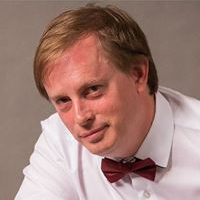Mathematical Modeling, Analysis, and Applications of Complex Dynamics in Electrical Engineering
A special issue of Mathematics (ISSN 2227-7390). This special issue belongs to the section "Engineering Mathematics".
Deadline for manuscript submissions: 31 August 2024 | Viewed by 3777
Special Issue Editor
Interests: analog circuits; nonlinear dynamics; chaos theory; oscillators; frequency filters
Special Issues, Collections and Topics in MDPI journals
Special Issue Information
Dear Colleagues,
Analog, digital, and mixed-mode networks can be modeled using suitable mathematical tools, such as set of ordinary and partial differential equations, algebraic expressions, and logic functions. Mathematical models are usually constructed to be as simple as possible, with respect to intended function of investigated electronic system. However, in such a case, many important features of modeled electronic systems can be neglected, and we can experience significant differences between measured and simulated results.
During the last few decades of intensive research, many building blocks dedicated to signal generation and processing have exhibit a complex behavior whose character is different from that of conventional, i.e., expected function. New numerical methods along with high-performance computers allow us to analyze mathematical models with increased complexity, considering many degrees of freedom, having elements working in different time scales or mathematical models with strongly nonlinear components, etc.
This Special Issue welcomes all contributions focused on the complex dynamical behavior of electronic circuits, introducing novel nonlinear systems having some unique properties, including the design of chaotic or hyperchaotic systems and its application in communication techniques. It also includes papers describing applications of new numerical algorithms on various electronic networks, research and review works on the mathematical methods developed for specific engineering problems, or the successful use of known mathematical approaches to answer important questions from the area of general electronics.
Dr. Jiri Petrzela
Guest Editor
Manuscript Submission Information
Manuscripts should be submitted online at www.mdpi.com by registering and logging in to this website. Once you are registered, click here to go to the submission form. Manuscripts can be submitted until the deadline. All submissions that pass pre-check are peer-reviewed. Accepted papers will be published continuously in the journal (as soon as accepted) and will be listed together on the special issue website. Research articles, review articles as well as short communications are invited. For planned papers, a title and short abstract (about 100 words) can be sent to the Editorial Office for announcement on this website.
Submitted manuscripts should not have been published previously, nor be under consideration for publication elsewhere (except conference proceedings papers). All manuscripts are thoroughly refereed through a single-blind peer-review process. A guide for authors and other relevant information for submission of manuscripts is available on the Instructions for Authors page. Mathematics is an international peer-reviewed open access semimonthly journal published by MDPI.
Please visit the Instructions for Authors page before submitting a manuscript. The Article Processing Charge (APC) for publication in this open access journal is 2600 CHF (Swiss Francs). Submitted papers should be well formatted and use good English. Authors may use MDPI's English editing service prior to publication or during author revisions.
Keywords
- analog and digital networks
- applications of chaos in electronics
- complex behavior
- computer-aided analysis of circuits
- deterministic dynamical system
- fractal dimension
- chaos and hyperchaos
- mathematical modeling
- nonlinear dynamics
- signal processing
- strange attractors





